What Does DOK Level 2 Look Like?
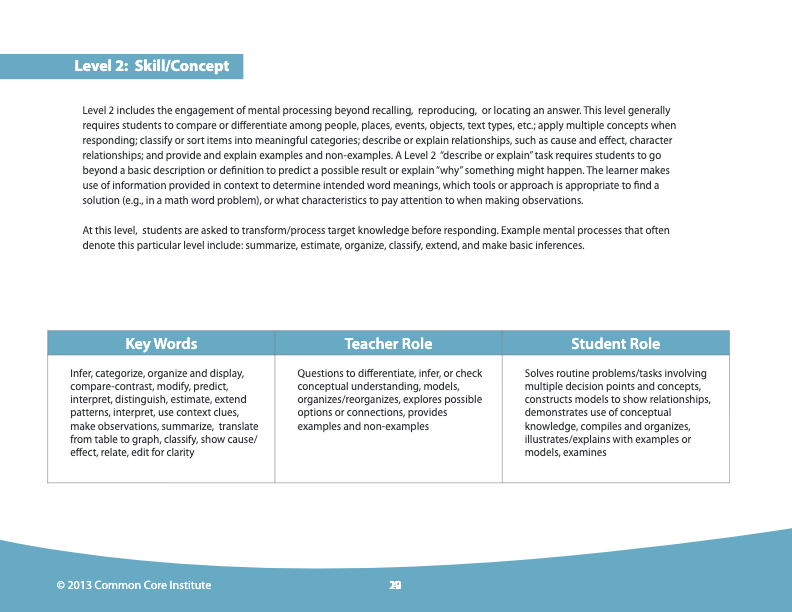
Level 2 includes the engagement of mental processing beyond recalling, reproducing, or locating an answer. This level generally requires students to compare or differentiate among people, places, events, objects, text types, etc.; apply multiple concepts when responding; classify or sort items into meaningful categories; describe or explain relationships, such as cause and effect, character relationships; and provide and explain examples and non-examples. A Level 2 “describe or explain” task requires students to go beyond a basic description or definition to predict a possible result or explain “why” something might happen. The learner makes use of information provided in context to determine intended word meanings, which tools or approach is appropriate to find a solution (e.g., in a math word problem), or what characteristics to pay attention to when making observations.
History of Higher Order Thinking Tools
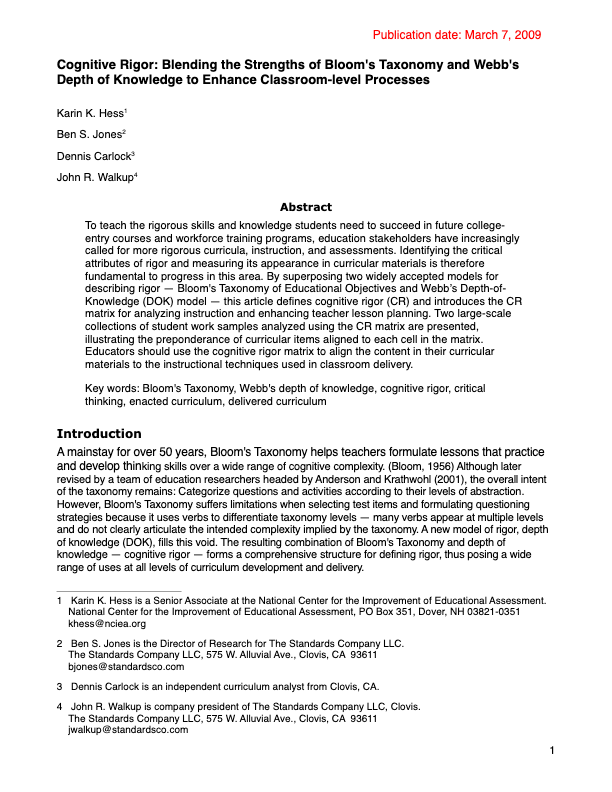
Cognitive Rigor: Blending the Strengths of Bloom’s Taxonomy and Webb’s Depth of Knowledge to Enhance Classroom-level Processes
Hess Cognitive Rigor Matrix (Classroom Walk-Through Tool)
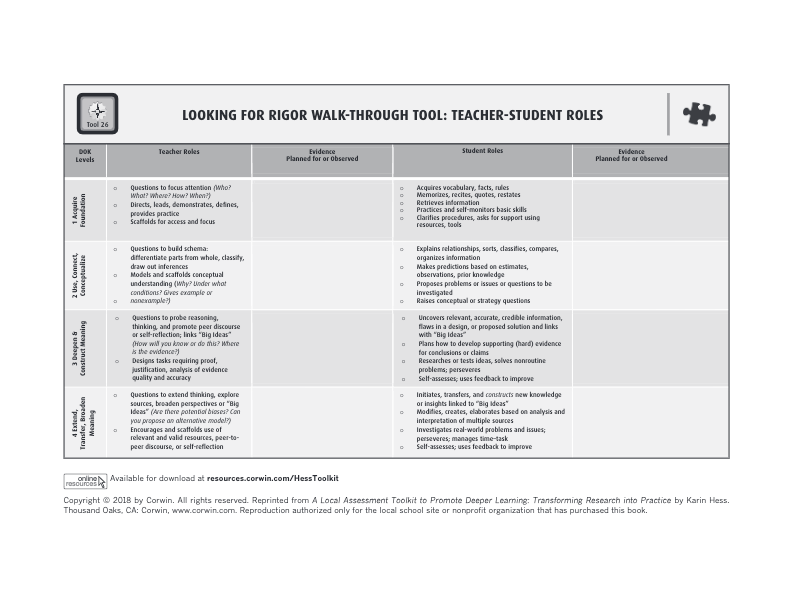
Looking for rigot walk-through tool: teacher and student roles.
Hess Cognitive Rigor Matrix (CTE)
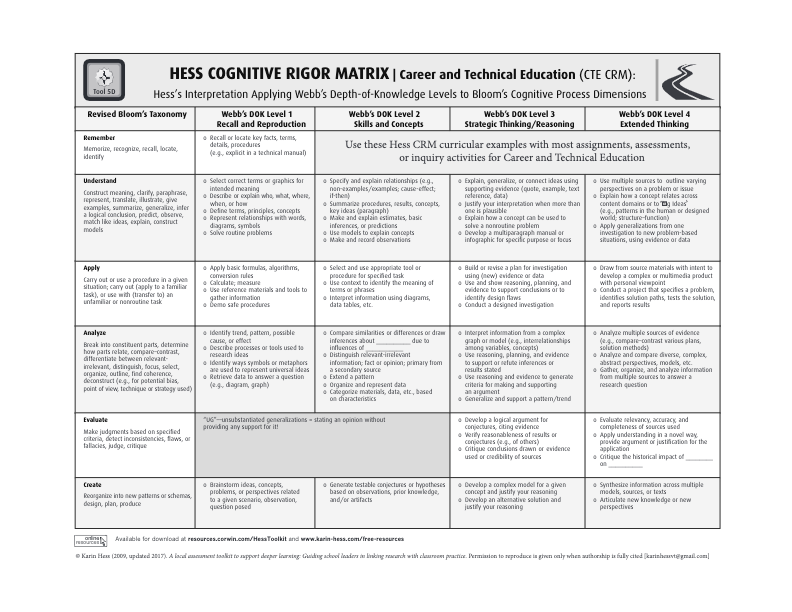
Hess’s Interpretation Applying Webb’s Depth-of-Knowledge Levels to Bloom’s Cognitive Process Dimensions in Career and Technical Education
Hess Cognitive Rigor Matrix (World Language)
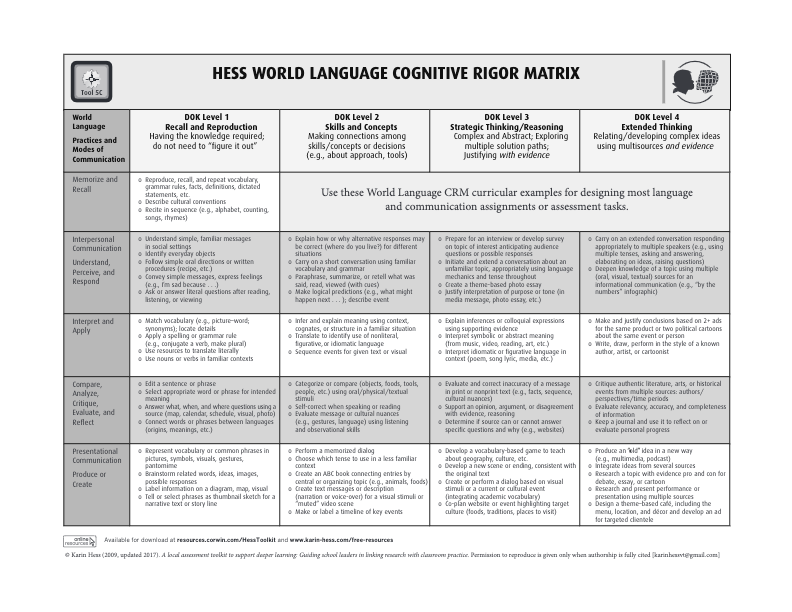
Applying Webb’s Depth-of-Knowledge Levels to Bloom’s Cognitive Process Dimensions in World Language
Hess Cognitive Rigor Matrix (Health/PE)

Applying (Hess’s Interpretation of) Depth of Knowledge to Porter’s Cognitive Demand Categories in Health and Physical Education
Hess Cognitive Rigor Matrix (Fine Arts)

Applying (Hess’ Interpretation of) Webb’s Depth-of-Knowledge Levels to Artistic Practices
Hess Cognitive Rigor Matrix (Social Studies)

Applying Webb’s Depth-of-Knowledge Levels to Bloom’s Cognitive Process Dimensions in Social Studies
Hess Cognitive Rigor Matrix (Writing/Speaking)

Applying Webb’s Depth-of-Knowledge Levels to Bloom’s Cognitive Process Dimensions in Writing/Speaking
Hess Cognitive Rigor Matrix (Math/Science)
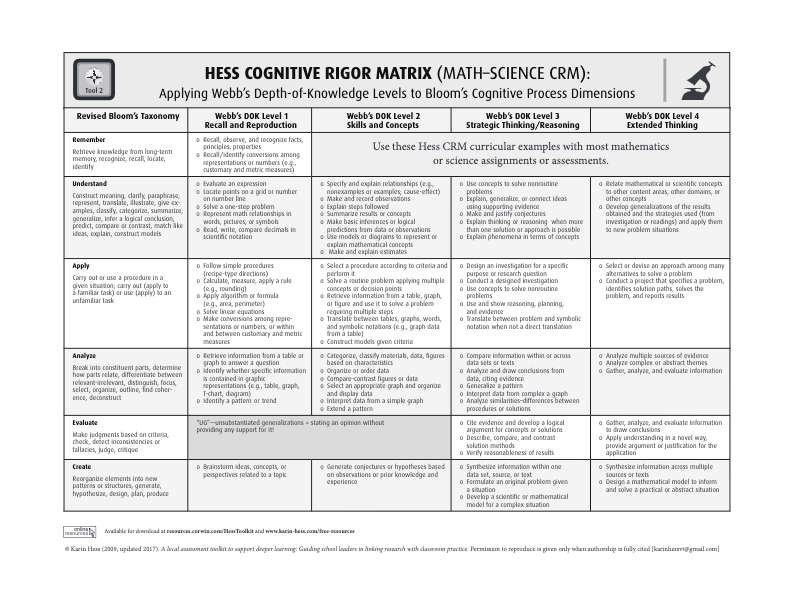
Applying Webb’s Depth-of-Knowledge Levels to Bloom’s Cognitive Process Dimensions in Math and Science
Hess Cognitive Rigor Matrix (Reading)
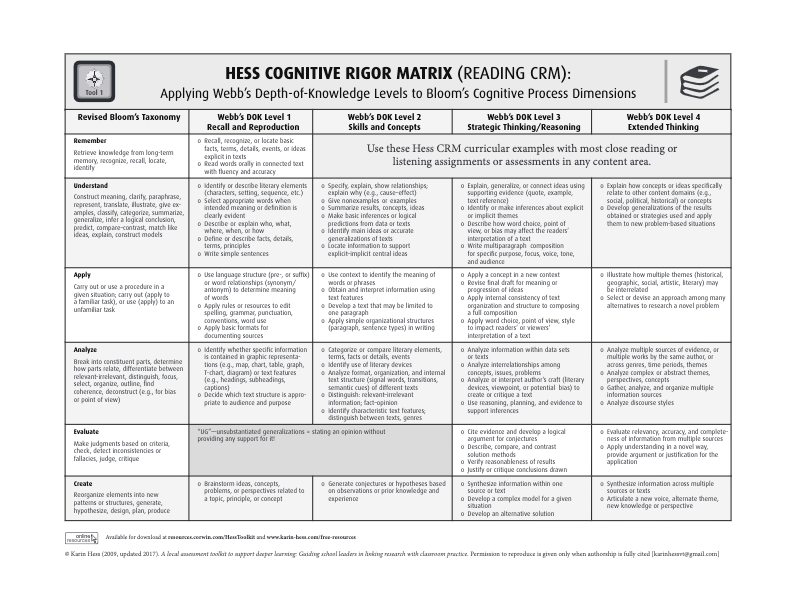
Applying Webb’s Depth-of-Knowledge Levels to Bloom’s Cognitive Process Dimensions in Reading
A Better Table Summary
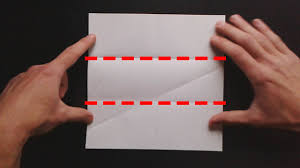
This activity allows students to process the most essential elements of the day’s lesson. They create a summary, combine summaries, and critically analyze their peers’ summaries to come up with better summaries of the day’s lesson.
List, Group, Label
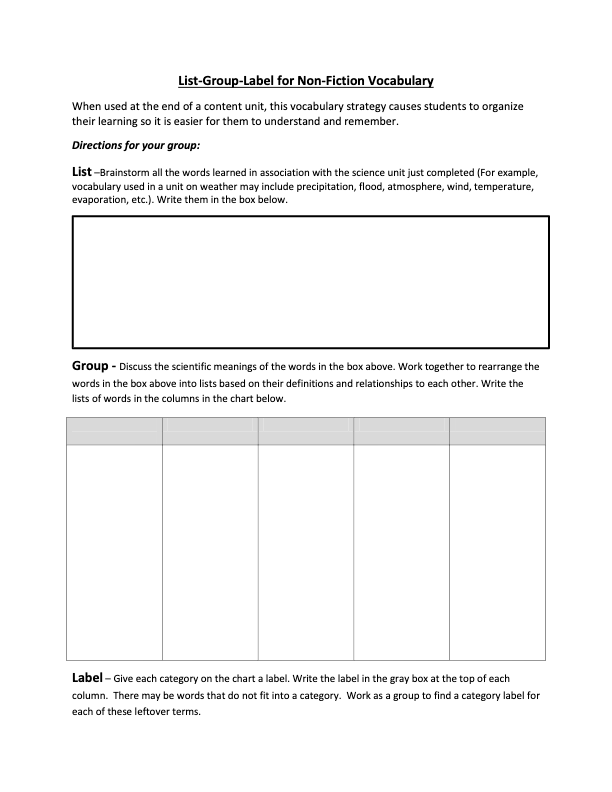
List, Group, Label is an excellent way to have students collaboratively “spill their brains” onto a sheet of paper at the end of a multi-lesson unit. We’ve modified it here so that it embeds the first step of the Ripple, by asking students to brainstorm on their own first.
1, 2, 3 O’Clock
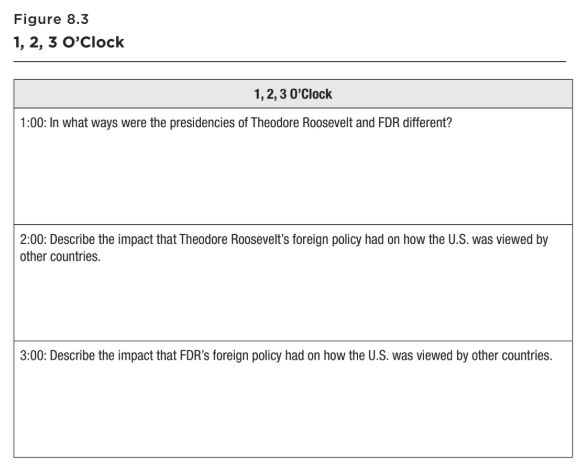
This wrap-up technique allows you to quickly review three important questions by having students respond to and discuss them with a designated classmate. It can be modified to include more or fewer questions, depending on the amount of time you have.
A-Z Sentence Summary
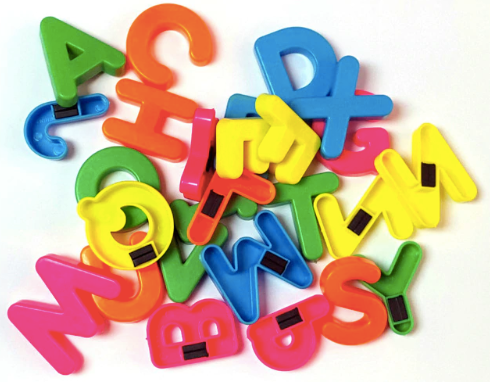
In this activity, students use alphabet refrigerator magnets to create a Chalkboard Splash review. At the end of a lesson, students choose magnetic letters, attach these to the whiteboard, and write their one-sentence summaries on the board. This activity is a great wrap-up to almost any lesson, enabling students to share and contribute to a larger-scale whole-class summary.
Three-Sentence Wrap Up
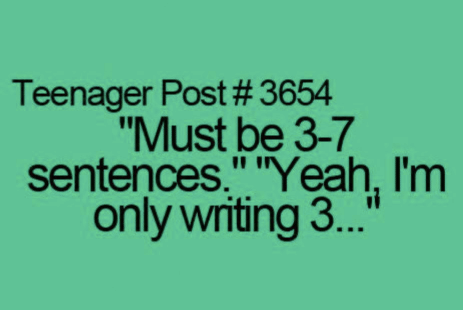
By asking students for Three-Sentence Wrap-Ups, you eliminate their tendency to add every peripheral item discussed in your lesson. Students have to be selective, determine what is most important, and then succinctly sum it up. Having to summarize something lengthy, in three sentences or fewer, can be a bit of a challenge.
The Biggest Aha Bar Graph
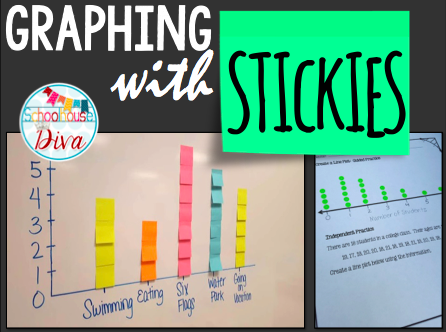
The Biggest Aha Bar Graph allows you to capture what students feel are their most important insights learned and see commonalities among them. Basically, it’s a bar graph constructed using your students’ Biggest Aha Quick-Writes. It allows you to peek into their minds as a group and see what portions of your lesson made the biggest impact on students and what needs further attention.
The Biggest Aha Quick-Write
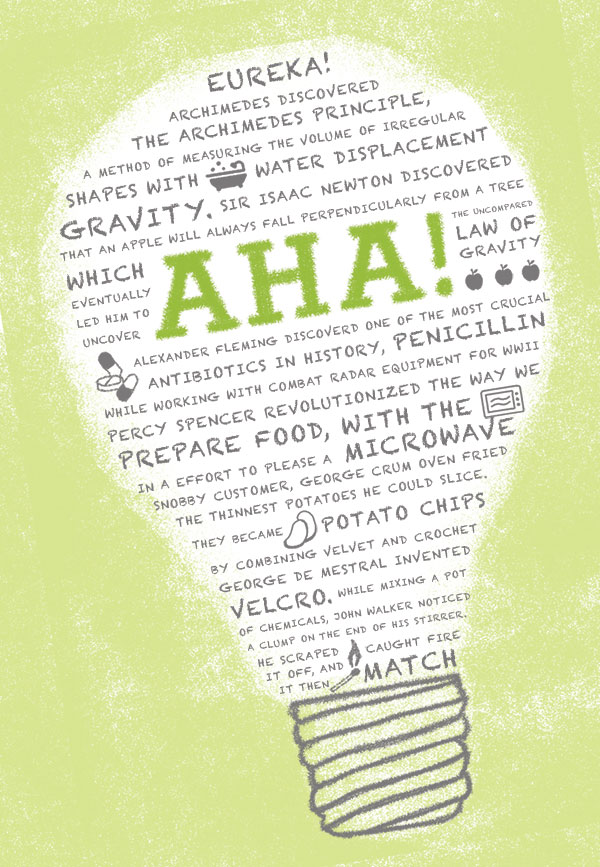
The Biggest Aha Quick-Write is a quick, versatile activity that can provide closure to almost any lesson. It allows you to capture what students feel are their most important insights learned from your lesson in just a few minutes of class time.
One Word Summary

One-Word Summaries to allow students to summarize the essence of the content presented that day using just one word. The teacher then circulates around the room asking for explanations or clarifications. This activity is versatile, brief, and can be used without much planning.
Lecture T-Chart
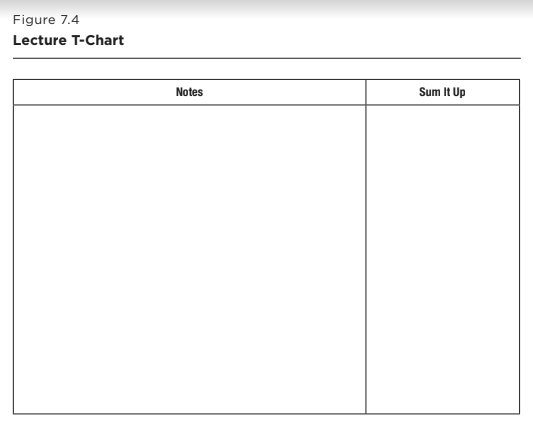
A Lecture T-Chart can be very useful to students by allowing them to review their notes and sum them up on the right-hand side of the T-chart using words or a Quick-Draw.
